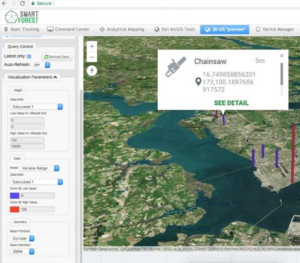To address these challenges, the client partnered with Quantilus to develop an ML-powered talent analytics product. The product could collect and analyze data from over 100 sources, including job boards, social media, and enterprise data, and process over 500 million records. The ML algorithms could identify patterns and insights from the data that would be difficult or impossible for a human analyst to identify. The product could also be customized to meet the specific needs of each customer.
The product had the following features:
- Automated data harvesting, segregation, formatting, transformation, and analysis
- ML algorithms for identifying patterns and insights
- Customizable to meet the needs of each client
- Secure data storage and sharing
A few use cases of the product include:
- Identifying high-potential employees: The product can analyze data from employee performance evaluations, job histories, education and training records, and other sources to identify employees who have the potential to succeed in more senior roles. The machine learning algorithms can identify patterns that might be missed by human analysts.
- Predicting attrition: By analyzing employee engagement surveys, attendance records, and salary history, the product can predict which employees are at risk of leaving the company. This allows managers to take proactive steps to retain key talent.
- Optimizing compensation: The product can analyze data on compensation levels, job titles, and performance ratings to identify areas where the company may be overpaying or underpaying employees. This can help the company adjust compensation levels to be more competitive and equitable.
- Supporting diversity and inclusion efforts: The product can analyze data on hiring, promotion, and retention rates for employees from different demographic groups to identify areas where the company may be falling short in diversity and inclusion. This information can help the company develop more effective strategies for recruiting, hiring, and promoting a diverse workforce.
- Developing targeted training programs: By analyzing data on employee skill levels, performance ratings, and career aspirations, the product can help identify skill gaps and areas where additional training may be beneficial. This allows the company to develop targeted training programs that are more likely to be effective in improving employee performance and retention.
The ML-powered talent analytics product offered several benefits:
- Accurate and reliable data analysis: The ML algorithms could analyze data from multiple sources and identify patterns and insights that would be difficult or impossible for a human analyst to identify.
- Time-saving: The automated data processing and analysis saved time and reduced the risk of errors.
- Scalability: The product could process large amounts of data, making it suitable for clients with large workforces or complex data needs.
- Customizable: The product could be customized to meet the specific needs of each customer, allowing them to get the most relevant insights.
- Better decision-making: The insights provided by the product could help clients make better decisions about talent acquisition, retention, and management, leading to improved business outcomes.
The product’s ML algorithms could analyze data from multiple sources and identify correlations, trends, and predictive models that could be used to make informed decisions about talent management.
The talent analytics product required automated data harvesting, segregation, formatting, transformation, and analysis to effectively analyze and derive insights from the vast amounts of data it collects from various sources. Quantilus built the end-to-end workflow for the same.
- Data Harvesting: The first step in the process is to collect data from multiple sources such as social media, job portals, internal HR systems, and other third-party sources. This data is typically in different formats and structures and needs to be collected and consolidated in a uniform format for further analysis.
- Data Segregation: Once the data has been collected, it needs to be segmented based on different parameters such as job function, location, experience level, and other relevant criteria. This enables easier analysis and comparison of data across different segments.
- Data Formatting: The next step involves formatting the data in a way that it can be easily analyzed by machine learning algorithms. This includes removing inconsistencies, standardizing naming conventions, and other formatting steps.
- Data Transformation: Once the data has been formatted, it needs to be transformed into a format that can be used for analysis. This may involve creating new features, aggregating data, or any other necessary transformations.
- Data Analysis: The final step is to analyze the data using machine learning algorithms to derive insights and make predictions. This can include identifying skill gaps, predicting attrition rates, and other insights that can help improve talent management.
The talent analytics product’s success was the ability to automate these steps and create a scalable, reliable data pipeline that can handle large amounts of data and derive actionable insights from it.
Overall, the ML-powered talent analytics product provided accurate, reliable, and customizable insights that helped the client’s customers make better decisions about talent management, leading to improved business outcomes, and eventually being acquired by Gartner.

